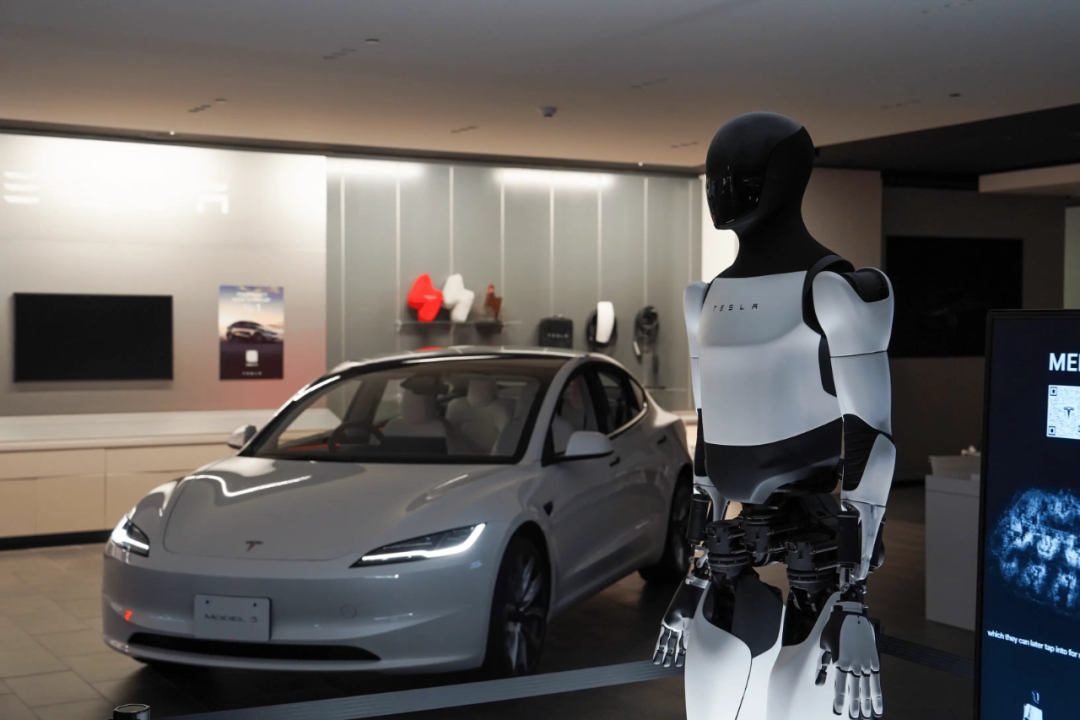 In the context of the deep integration of artificial intelligence and robotics technology, the demand for lightweight and high-performance core components of humanoid robots is becoming increasingly urgent. The composite technology of PEEK (Polyether Ether Ketone) and carbon fiber (CF), with its high strength, low density, and wear-resistant self-lubricating properties, has become a key pathway to break through the limitations of traditional metal materials. It is estimated that every 100,000 robots using composite materials will drive a demand of 195 tons of PEEK. If Tesla achieves its goal of producing 500,000 units by 2027, the industry growth potential is significant.
In the context of the deep integration of artificial intelligence and robotics technology, the demand for lightweight and high-performance core components of humanoid robots is becoming increasingly urgent. The composite technology of PEEK (Polyether Ether Ketone) and carbon fiber (CF), with its high strength, low density, and wear-resistant self-lubricating properties, has become a key pathway to break through the limitations of traditional metal materials. It is estimated that every 100,000 robots using composite materials will drive a demand of 195 tons of PEEK. If Tesla achieves its goal of producing 500,000 units by 2027, the industry growth potential is significant. Breakthrough Application Scenarios: Six-Dimensional Force Sensors and Harmonic Reducers1. Lightweight Innovation of Six-Dimensional Force SensorsIn high-speed operating environments, traditional aluminum alloy six-dimensional force sensors are easily affected by inertial torque, leading to measurement errors. PEEK material, with its lightweight and high sensitivity characteristics, can replace aluminum alloy as the elastic body of the sensor. Its density is only 58% of that of aluminum alloy, which reduces inertial mass while ensuring that mechanical performance meets the demands of complex acceleration fields, significantly improving measurement accuracy and response speed.2. Performance Leap of Harmonic ReducersMetal-based harmonic reducers are prone to deformation stress and resonance issues under long-term high-load conditions. CF/PEEK composite materials, through the high modulus characteristics of carbon fiber, provide the reducer with lower deformation stress, higher damping properties, and increase the engagement area between the flexible and rigid wheels, enhancing its load capacity and fatigue life by over 30% compared to metal bases. This technological breakthrough provides a key guarantee for the stability of robotic joint movements.3. Comprehensive Advantages of Lightweight and Rigid-Flexible BalanceThe CF/PEEK composite technology not only addresses the low-temperature brittleness of pure PEEK materials but also achieves a balance of rigidity and flexibility through the high strength and high modulus characteristics of carbon fiber. For example, CF/PEEK fabric with a carbon fiber volume content of 70% has tensile strength and modulus comparable to aluminum alloy and titanium alloy, but its density is only 36% of that of titanium alloy, showing significant application potential in core areas such as robotic bearings and body joints.Material Breakthrough and Market Prospects: From Technical Validation to Large-Scale Penetration1. Cost-Performance Trade-offAlthough the unit price of PEEK is relatively high, its successful application in the new energy vehicle sector has proven that performance advantages can offset cost pressures. For instance, in 2022, the domestic automotive sector used 526.87 tons of PEEK, accounting for 22% of downstream demand. The cost of CF/PEEK composite materials is about 1-2 times the procurement cost of PEEK plus carbon fiber, with the material cost of a single humanoid robot being approximately 2645-3967 yuan, accounting for 1.48%-2.21% of the total machine cost, making it economically viable with lightweight and long-life benefits.2. Industry Chain Collaboration and Domestic BreakthroughsThe global PEEK supply presents a pattern of “one strong and many strong,” but since 2016, domestic companies have gradually broken the monopoly in high-end fields, highlighting cost-performance advantages. Meanwhile, the single consumption of upstream key raw material fluoroketone (0.7-0.8 tons/ton PEEK) and the demand linkage effect are significant, with an expected increase of 1463 tons of fluoroketone driven by the humanoid robot sector by 2027, forming a full-chain collaboration from materials to applications.3. Risks and ChallengesAlthough CF/PEEK composite technology has entered the industrialization verification stage, the continuous prepreg preparation technology is still in the laboratory research phase in China, coupled with the high complexity of composite processes, limiting short-term mass production capabilities. Additionally, fluctuations in raw material prices and the speed of new application scenarios being implemented remain potential constraints on the long-term development of the industry.As the commercialization process of humanoid robots accelerates, PEEK carbon fiber composites are expected to become another growth pole following new energy vehicles, with their technological iteration and large-scale application deeply reshaping the high-end manufacturing supply chain.(Source: Financial界)
Breakthrough Application Scenarios: Six-Dimensional Force Sensors and Harmonic Reducers1. Lightweight Innovation of Six-Dimensional Force SensorsIn high-speed operating environments, traditional aluminum alloy six-dimensional force sensors are easily affected by inertial torque, leading to measurement errors. PEEK material, with its lightweight and high sensitivity characteristics, can replace aluminum alloy as the elastic body of the sensor. Its density is only 58% of that of aluminum alloy, which reduces inertial mass while ensuring that mechanical performance meets the demands of complex acceleration fields, significantly improving measurement accuracy and response speed.2. Performance Leap of Harmonic ReducersMetal-based harmonic reducers are prone to deformation stress and resonance issues under long-term high-load conditions. CF/PEEK composite materials, through the high modulus characteristics of carbon fiber, provide the reducer with lower deformation stress, higher damping properties, and increase the engagement area between the flexible and rigid wheels, enhancing its load capacity and fatigue life by over 30% compared to metal bases. This technological breakthrough provides a key guarantee for the stability of robotic joint movements.3. Comprehensive Advantages of Lightweight and Rigid-Flexible BalanceThe CF/PEEK composite technology not only addresses the low-temperature brittleness of pure PEEK materials but also achieves a balance of rigidity and flexibility through the high strength and high modulus characteristics of carbon fiber. For example, CF/PEEK fabric with a carbon fiber volume content of 70% has tensile strength and modulus comparable to aluminum alloy and titanium alloy, but its density is only 36% of that of titanium alloy, showing significant application potential in core areas such as robotic bearings and body joints.Material Breakthrough and Market Prospects: From Technical Validation to Large-Scale Penetration1. Cost-Performance Trade-offAlthough the unit price of PEEK is relatively high, its successful application in the new energy vehicle sector has proven that performance advantages can offset cost pressures. For instance, in 2022, the domestic automotive sector used 526.87 tons of PEEK, accounting for 22% of downstream demand. The cost of CF/PEEK composite materials is about 1-2 times the procurement cost of PEEK plus carbon fiber, with the material cost of a single humanoid robot being approximately 2645-3967 yuan, accounting for 1.48%-2.21% of the total machine cost, making it economically viable with lightweight and long-life benefits.2. Industry Chain Collaboration and Domestic BreakthroughsThe global PEEK supply presents a pattern of “one strong and many strong,” but since 2016, domestic companies have gradually broken the monopoly in high-end fields, highlighting cost-performance advantages. Meanwhile, the single consumption of upstream key raw material fluoroketone (0.7-0.8 tons/ton PEEK) and the demand linkage effect are significant, with an expected increase of 1463 tons of fluoroketone driven by the humanoid robot sector by 2027, forming a full-chain collaboration from materials to applications.3. Risks and ChallengesAlthough CF/PEEK composite technology has entered the industrialization verification stage, the continuous prepreg preparation technology is still in the laboratory research phase in China, coupled with the high complexity of composite processes, limiting short-term mass production capabilities. Additionally, fluctuations in raw material prices and the speed of new application scenarios being implemented remain potential constraints on the long-term development of the industry.As the commercialization process of humanoid robots accelerates, PEEK carbon fiber composites are expected to become another growth pole following new energy vehicles, with their technological iteration and large-scale application deeply reshaping the high-end manufacturing supply chain.(Source: Financial界)
Disclaimer: The information, data, and other content involved in this article are sourced from publicly available information on the internet and are for reference only. They do not constitute investment advice or basis; investors operate at their own risk. Investment carries risks, and caution is advised when entering the market.